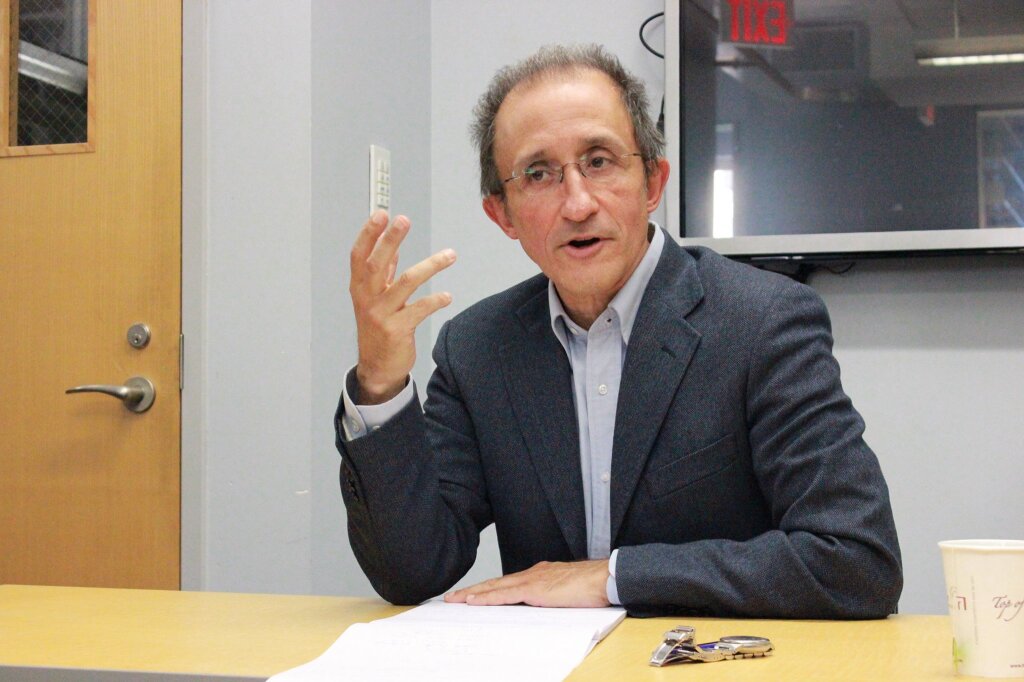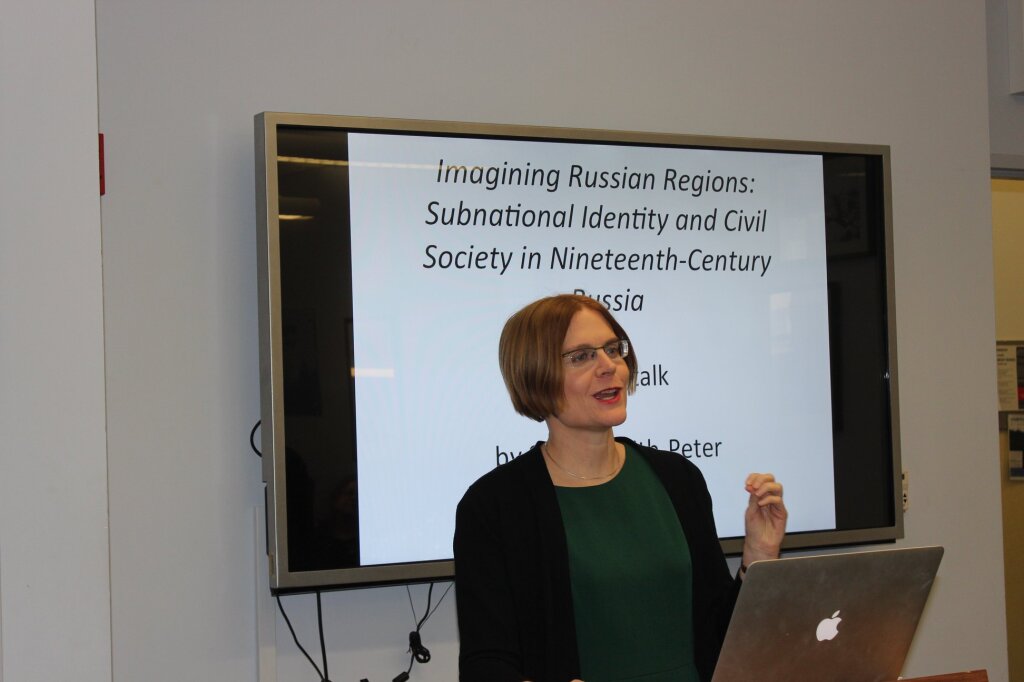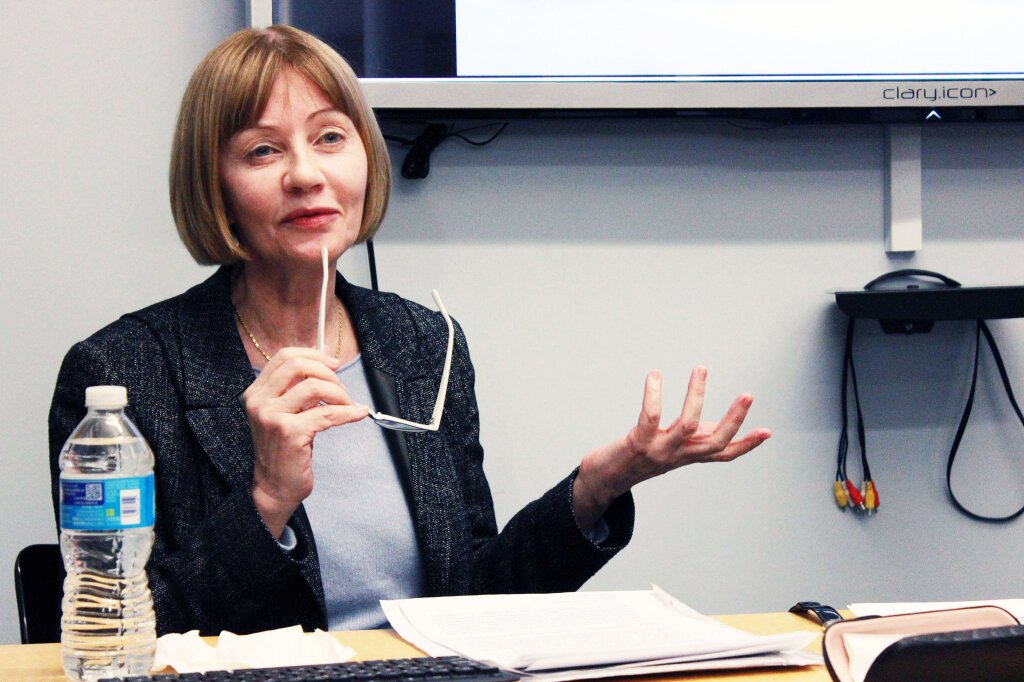Watch the video of the event here
On November 13 and 17, 2015, the NYU Jordan Center for the Advanced Study of Russia and the Department of History welcomed economic historian Alessandro Stanziani, Professor at École des hautes études en sciences sociales and Research Director at the Centre national de la recherche scientifique. During his two discussions, Stanziani positioned the 18th and 19th-century Russian economy in a comparative analysis with Western Europe and Asia, focusing on the interplay between labor, coercion and freedom in different parts of the world.
On November 13, Stanziani delivered a talk entitled “Global Utilitarianism: Labor, Coercion, and Freedom in Benthamite thought and practices (Britain, Russia, India), 1770-1860,” which discussed a portion of his upcoming book. “I’m always concerned with the way we can use economic knowledge, culture and practices to discuss something else,” Stanziani began. Studying utilitarianism and the Bentham experience in Russia, he said, is one example of how Western European political philosophy and economics were influenced by other systems discovered in the east. While “utilitarianism was—much more than other approaches in the period—well-accepted and widespread, involved in all professional communities and intellectuals,” Stanziani said, its voyage into Russia brought up new questions regarding systems of labor, coercion and freedom.
In the discussion, Stanziani also challenged the notion that economics exists as a single field. “Benthamism is not the same in a place called Russia and a place called England,” he said. The success of different economic approaches at the time depended largely on local institutions; the possibility of disseminating ideas depended on the structures of a given empire. For example, “very few people accepted [Bentham] in Britain in the same way that very few people accepted Adam Smith’s idea that economics was the solution to slavery,” he explained.
As the discussion opened to the audience, Yanni Kotsonis asked about the specificity of Russia in the conversation between the three empires. “Is Russia different precisely because it’s an autocracy in a way that Britain is not? Can Bentham imagine much more in Russia [...] precisely because it’s Russia?” he asked. In response, Stanziani said that Russia was a special case because, while in Britain it was considered difficult to manage wage-earners, in Russia “serfs work very well and are very well-ordered.” For Bentham, all workers needed to be disciplined to maximize efficiency, which is why he advocated for a panoptic model in Russia. Bentham wanted to apply his original model of the panopticon—a circular prison with isolated individual cells that could be observed at all times from a central watchtower—to Russia’s unique labor system. On the other hand, Britain’s workers were too scattered for this model to work. Stanziani also mentioned the distinctive relationship many thinkers had with Russia. Like the French philosophers enamored of the country before him, in Russia Bentham tried to transfer dreams into politics, he said.
In the remaining time, Stanziani was able to expand on a number of different themes, including the abolition of serfdom in Russia in 1861, the political trade-off between free trade and economic sufficiency, the difference between free and un-free labor in terms of debt and debt peonage, British welfare in light of the famines in both India and Ireland, and the two prongs of coercion—mobility and the obligation to work. Oksana Mykhed, visiting scholar at the Jordan Center, asked about the preservation of empires and the role that the production of commodities played in this process. Stanziani said that there was a notable increase in local markets in the 18th century, and that both international and domestic markets became important to maintaining imperial dominance. He also observed that the way an empire was managed was entirely related to the type of products available. “You can’t control cotton the way you control wine,” he said. For example, the nature of labor, production and trade in the British empire, whose main exports were cotton and sugar, was distinct from that of the Russian empire, which mainly exported wheat.
On November 17, Stanziani returned with a lecture entitled, “Beyond Backwardness: Russian Economy in Global Historical Perspective (1750-1914).” At the beginning of the talk, Stanziani mentioned that Russia is an interesting case study because it repeatedly confounds modern perspectives on civilization. He presented a map that showed the expansion of the vast Russian territory over time and a chart diagramming the decline of Soviet national income growth from 1928 to 1987. “According to the economists, the USSR—and Russia—should never have existed. Despite our theories [Russia] is still there and it’s strong. It’s stronger than it’s ‘supposed’ to be, according to any kind of theory,” he said.
Stanziani said that this discrepancy is in part due to the notion of backwardness, which has been linked to Russia since the Enlightenment and was expanded on in the 1950s by Russian-born economic historian Alexander Gerschenkron. The scholar explained that the concept of “backwardness” stems from the 18th-century logic that there exists a single path to modernity, and that the term was largely associated with Russia. The predominant theory argues that “the West could exploit the Americas while the poor China was put down by the fact that half of Asia was in the hands of Russia,” and that while it was accepted that China was a true economic competitor with real markets, Russia had nothing more than despotism and serfdom. With this in mind, Stanziani said, “the time has come to reread Russia in a conversation with area studies.”
Stanziani approached this task by looking at the role of the state and coercion in the context of Russian history. “We evoke the state to explain Russia all the time,” he said, but we simultaneously see the state as a “huge department” and fixate on the weakness of the state. “From an analytical point of view, there is something which does not fit,” he said.
In terms of coercion, Stanziani said that in the basic comparative approach for economic history, Russia is considered a part of the East “because there is a lot of coercion and no capital,” while in Europe one can find “a lot of capital and no coercion.” Today, however, the notion that 18th and 19th-century Asia had no capital is extremely contested and in the West there was much less capital than previously believed. What’s more, in the case of Russia, “during the Muscovy expansion, trade was secured and was expanding,” in East Asia, South Asia and Europe, Stanziani explained.
Stanziani also mentioned that although the conventional scheme argues for a positive correlation between capitalism in the West and serfdom in the East, extortion is actually related to economic growth everywhere. “The history of serfdom is extremely related to the notion of backwardness,” he said, but “we can have good [economic] growth with no democracy, no rights, and a lot of coercion. We might say that tsarist Russia or China today are very ‘good’ countries because despite coercion they have huge growth.”
In the Q&A session that followed, Stanziani was able to expand on his method. In response to a question from Kotsonis about when it becomes important to think about a regime as coercive, Stanziani said it depends on the method of analysis. He explained that he uses an externalist approach that considers the broader context of a specific historical moment. “With the internalist approach,” on the other hand, “19th-century actors considered real slavery to be wage labor,” he said.
Stanziani was also asked about how Russians in the 18th and 19th centuries understood the Russian economy. He said that economics did not exist as a single discipline at the time—it was part of a number of other vocations. In addition, not all economic knowledge was coming from the West. “Western theorists were influenced by how Russians thought of the same problems,” he said. One of the main problems in this exchange was the translation of Western terms into Russian. “Wealth,” for example, could be translated as “value” or as “cost of production.” “This was a huge disadvantage for the interpretation of what Marxism means in [the] Soviet Union,” Stanziani added.
Other questions probed the speaker’s methodology, which some felt was implicitly based on a broader Western European understanding of Russia. Barbara Weinstein, Chair of the Department of History at NYU, said that she felt that in Stanziani’s discussion there was a lot of slippage when talking about coercion as a metaphor versus coercion as labor. “I disagree with seeing wage labor as slavery,” Weinstein said. “I think the laborer is seeing this as a metaphor [...] and metaphor is not an economic issue.” In the remaining time, Stanziani spoke more broadly about his attitude towards Russia in a historical perspective and the inverse relationship between the development of rights and economic growth.



